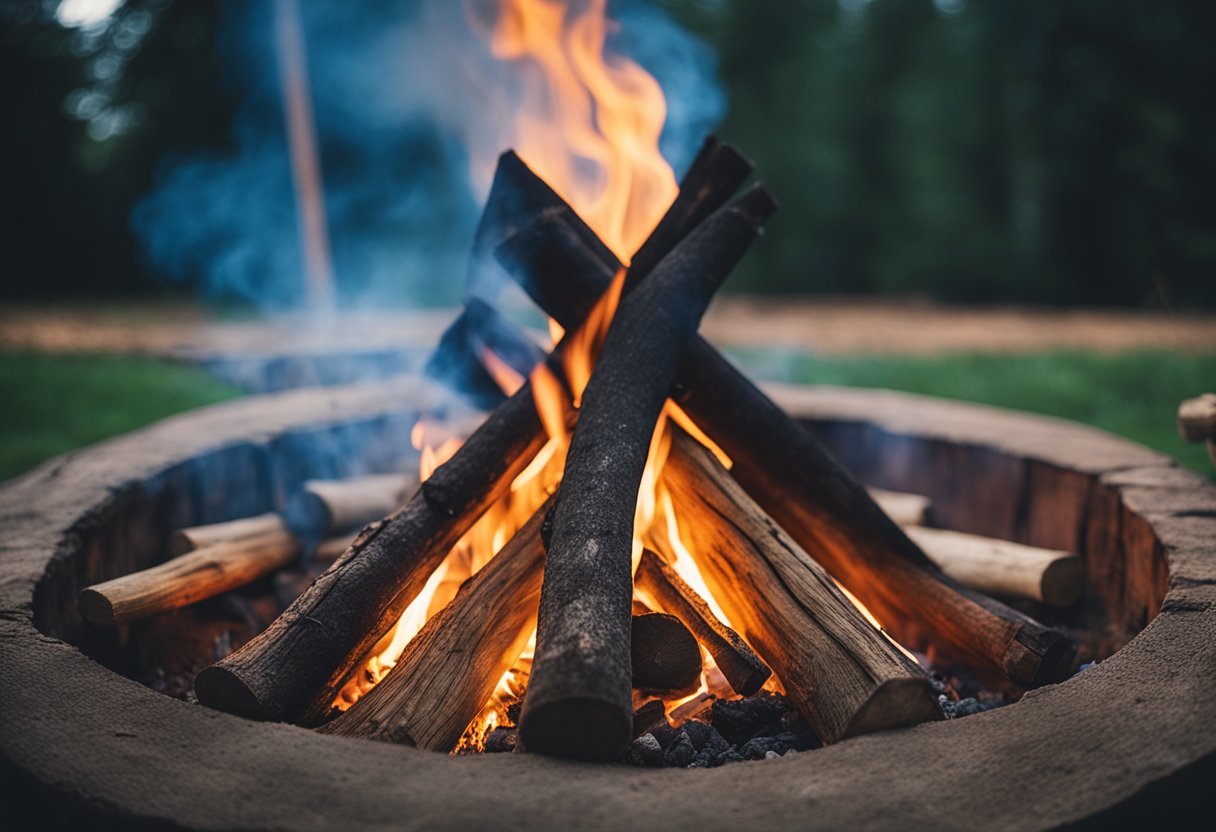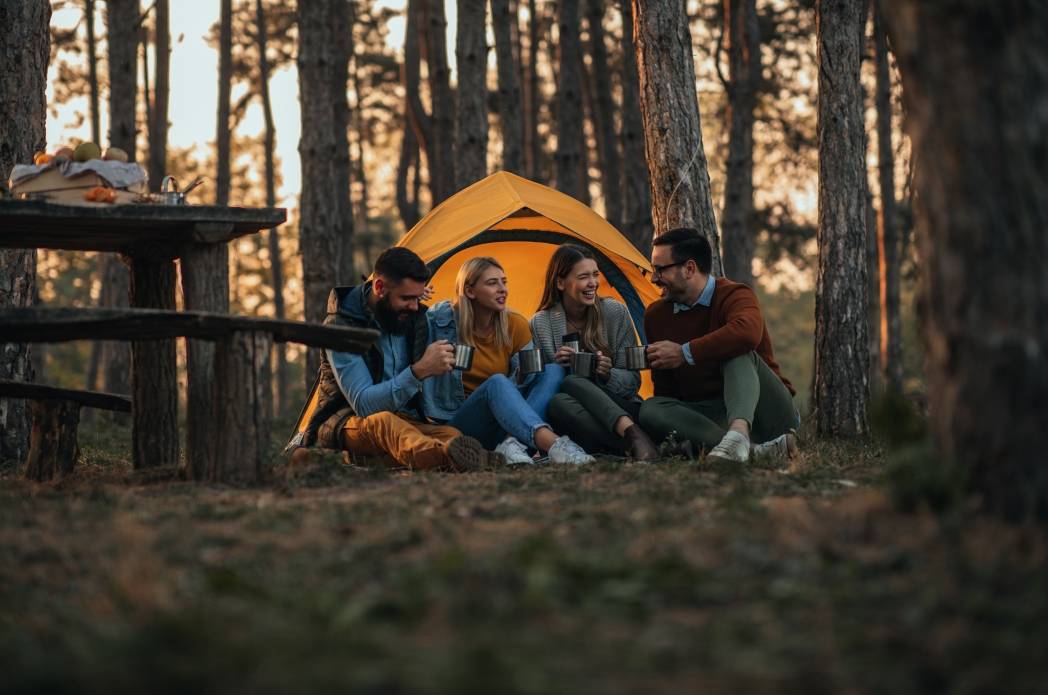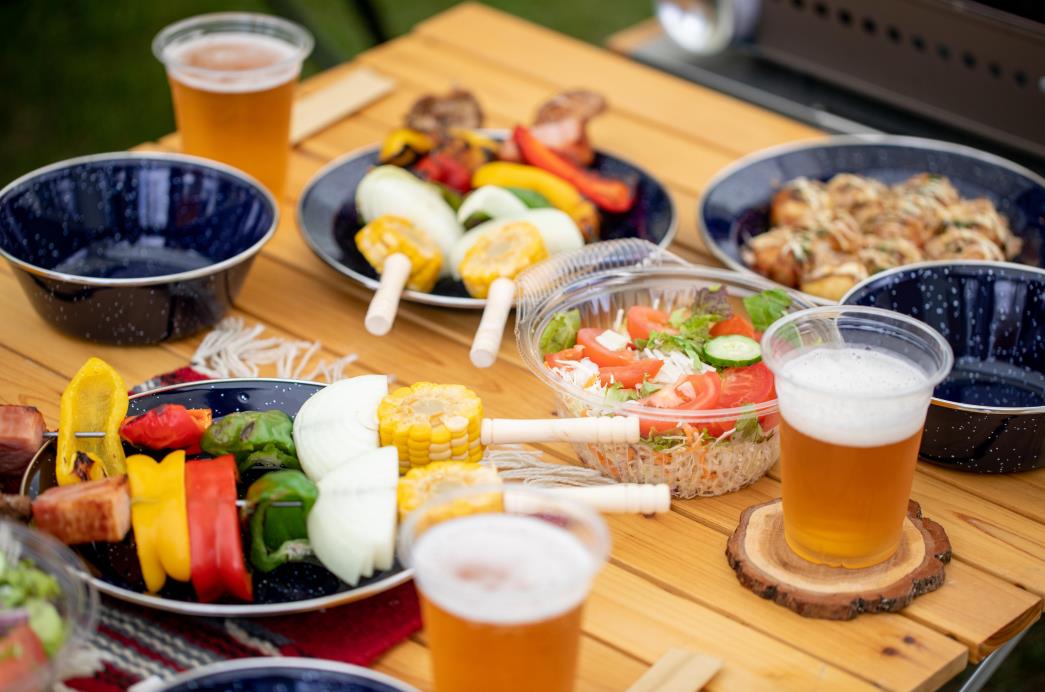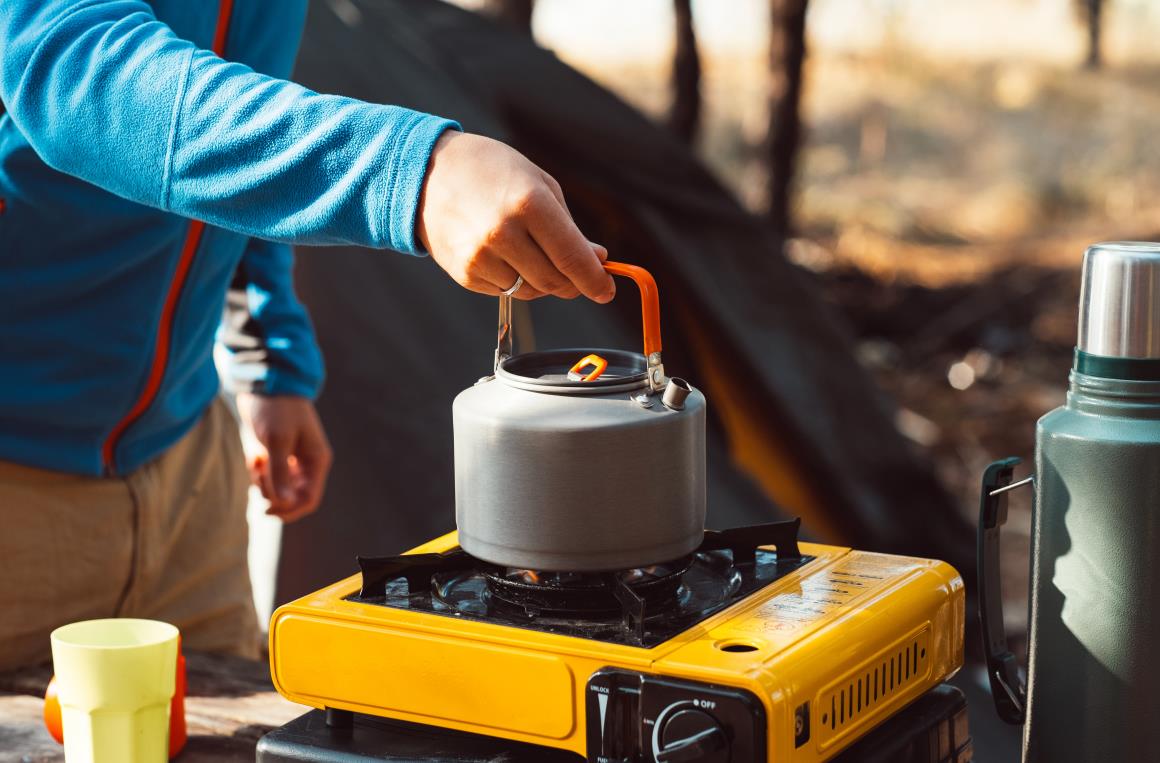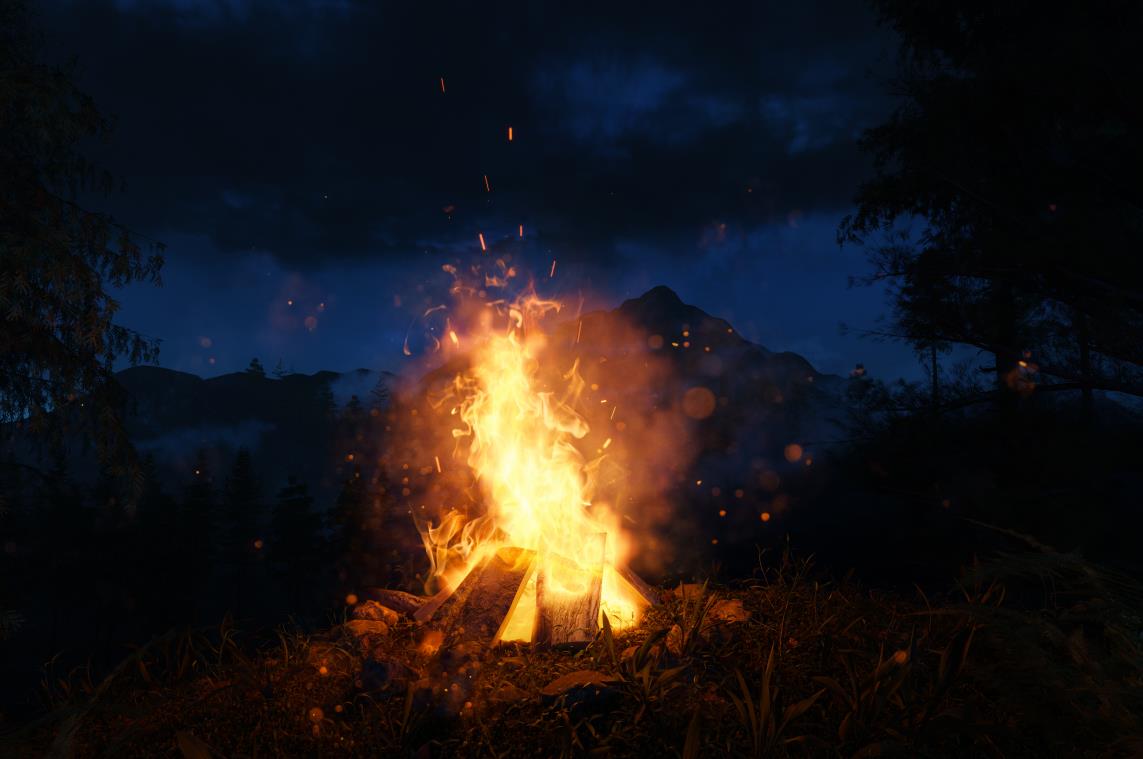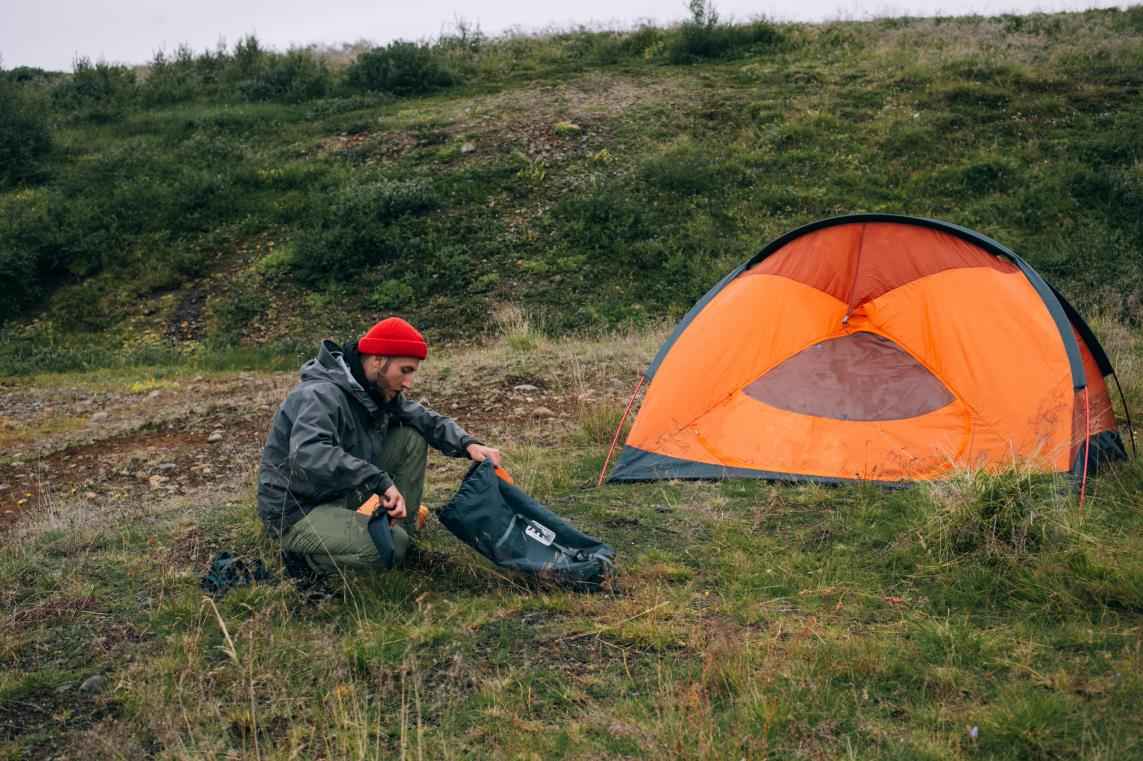Picture this: a world far removed from the daily hustle and bustle, where you can trade the noise of traffic for the gentle whispers of wind through the trees. Solo camping offers a chance to immerse yourself in the beauty of nature, seeking solace in its serenity and finding yourself in the process. However, careful preparation is vital to make the most of this solitary expedition.
Start with the weather forecast and scout your camping spot in advance. As for camping cooking equipment, bring a camping stove, utensils, and ample food supplies to keep yourself fueled. Survival tools like a multi-tool, first aid kit, and navigation tools are crucial for safety and convenience. Also, remember to pack a comfortable sleeping setup and some essential electronics to make your solo camping experience enjoyable and memorable.
This article brings to light the ultimate solo camping checklist. We’ll cover everything, including the camping gear you need to stay comfortable, survival tools, and bedding.
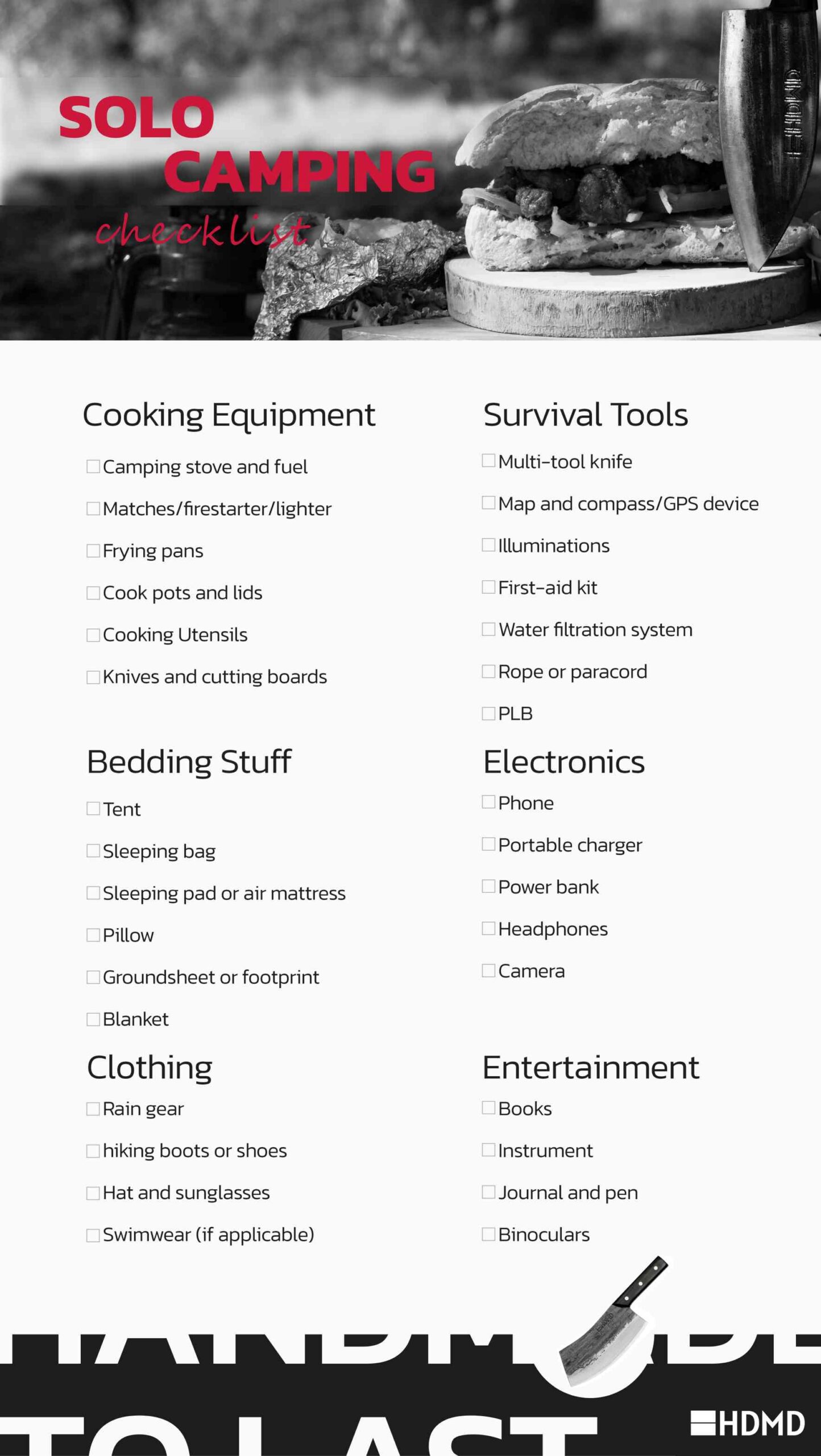
Table of contents
Cooking equipment checklist
When choosing camping kitchen cooking essentials for solo adventures, it’s crucial that you strike a balance between efficiency and practicality. For example, when selecting a camping stove, an efficient model may offer fast cooking times but can be heavy to carry.
Meanwhile, a more practical stove might take longer to cook but is lightweight and easy to use. By finding a middle ground that combines effective performance with convenience and portability, you can ensure a smooth and enjoyable solo camping experience.
The following are some essential cooking equipment for solo camping:
Camping stove and fuel
A reliable camping stove is a crucial component of your cooking setup. Look for a lightweight, portable option that is easy to set up and operate. Consider the type of fuel it uses, such as propane and butane, or liquids like white gas and kerosene.
Although the liquids are more versatile and work well in cold weather, they require more maintenance and are heavier to carry. Butane and propane canisters are much easier to carry but may perform poorly in extremely cold conditions. Settle with a fuel type that best fits your needs and the conditions of your solo camping trip.
Matches/firestarter/lighter
Matches, firestarters, or a dependable lighter should be part of your essential gear. Matches are a classic option but unreliable in wet or windy conditions. Firestarter, such as tinder or kindling, can be a more dependable option.
A lighter, whether a basic butane lighter or a more heavy-duty waterproof option, can also be a reliable choice for starting fires or lighting your stove. We recommend having multiple options because they prepare you for various situations.
Frying pans
Versatile frying pans are a solo camper’s best friend. Look for lightweight options with durable non-stick coatings that make cooking and cleaning a breeze. Consider the size of the pan, making sure it’s suitable for preparing meals for one person while still being easy to pack and carry.
Cook pots and lids
Lightweight and durable cook pots with well-fitting lids are invaluable for solo camping cooking. Opt for pots made of materials like aluminum or stainless steel, which offer excellent heat distribution and are easy to clean. Consider the size of the pots, selecting ones that suit your meal requirements while remaining manageable for solo use.
Cooking Utensils (Spatula, Large Spoon, Tongs, and Whisk)
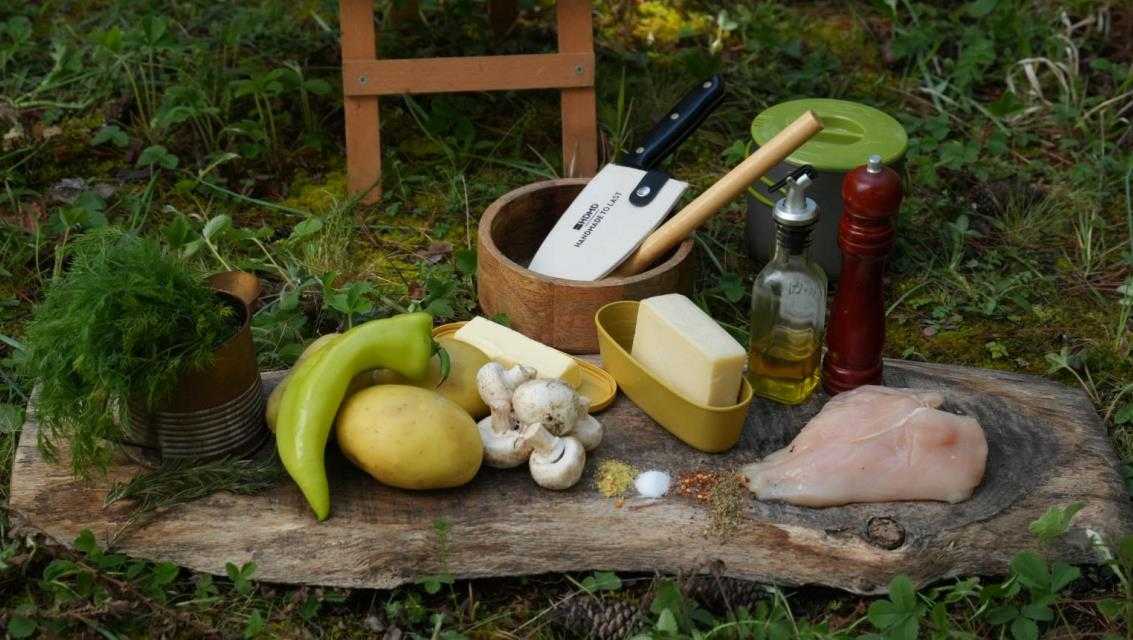
Solo cooking requires a set of essential utensils to make meal preparation a breeze. A spatula is perfect for flipping food, while a large spoon serves multiple purposes, such as stirring and serving. Tongs provide a firm grip for turning and handling hot items, and a whisk is useful for blending ingredients smoothly. Look for utensils made of high-quality materials like stainless steel and compact designs that are easy to pack and carry.
Knives and cutting boards
Knives and cutting boards are essential tools for solo cooking during camping trips. A reliable and versatile camping knife with a sharp blade is crucial for preparing ingredients and handling various cutting tasks. Look for a compact, lightweight knife sheath to protect the knife and you.
A good camping cooking knife like the HDMD Utility Chef Knife can also be a multi-tool for other tasks like opening cans or bottles.
Remember to carry a midsize wooden cutting board because it’s necessary to provide a stable surface for chopping ingredients and protect your camping surfaces from damage. Ideally, the board should be lightweight and not occupy much space in your camping kitchen setup.
Handpicked for you
True cutting power in the palm of your hand
Other kitchen equipment to consider
In addition to essential cooking equipment, solo campers should also remember to pack important items for camp kitchen food storage. Remember to bring a reliable cooler or coolers to keep your food fresh and cool. Ice or ice substitutes are also necessary to maintain proper temperatures inside the cooler.
Invest in bear spray and rodent-resistant food containers to ensure your safety and protect your food from wildlife. And remember the little things – egg holders to keep your eggs intact, small food containers for leftovers, and resealable bags to keep your food organized and fresh.
Large bins or bags are also crucial for transporting and storing kitchen gear, making everything easily accessible and organized. By keeping all these essentials in mind, you can enjoy your solo camping trip without worrying about the safety and freshness of your food.
Survival tools checklist
Survival tools are essential to help you meet basic needs and overcome challenges while camping in outdoor or wilderness environments. These tools assist with camping activities such as shelter building, fire starting, navigation, food preparation, and personal safety.
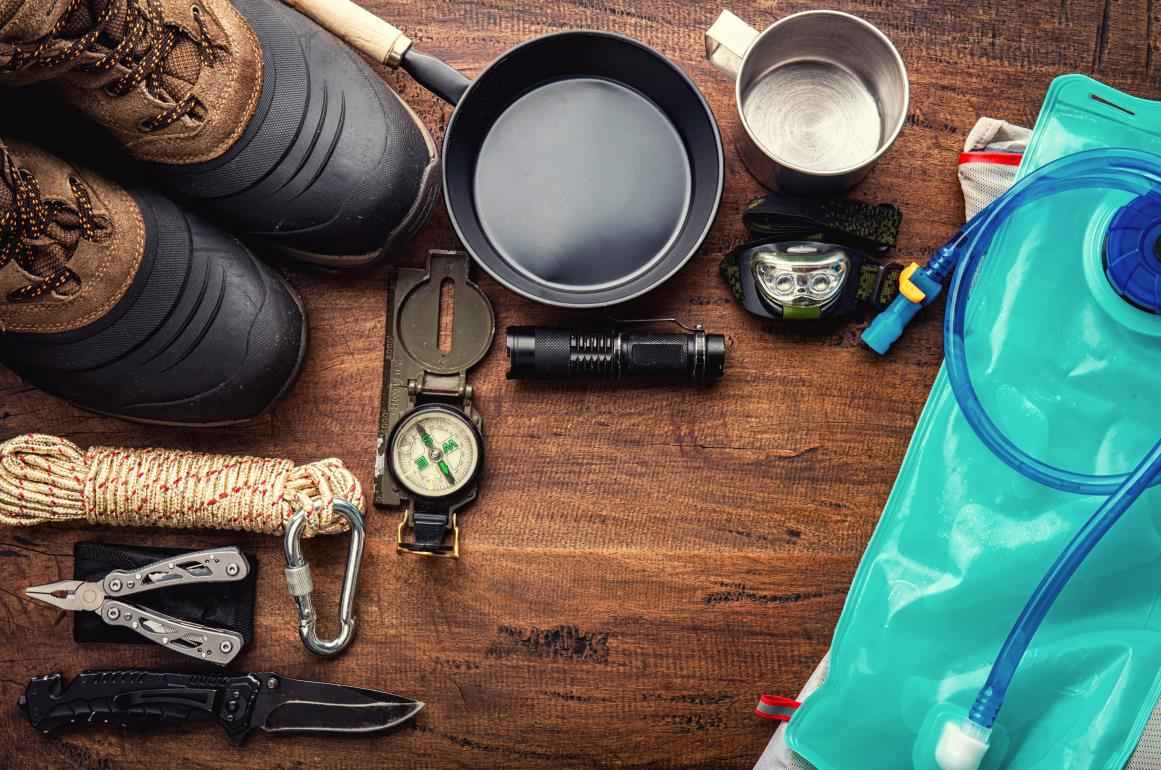
Here are some common survival tools used in camping:
Multi-tool knife
A multi-tool knife is a versatile tool for multiple purposes. It typically includes various tools like blades, screwdrivers, pliers, scissors, and more. It can assist with tasks such as cutting ropes, opening food packages, repairing gear or equipment, and even providing basic first aid. A knife is particularly useful for food preparation, cutting branches for firewood, or creating improvised tools.
Map and compass/GPS device
These navigation tools are crucial for orienting yourself in the wilderness. A map provides a broader understanding of the terrain, while a compass helps you determine directions.
Learn to read a map and navigate using a compass before your trip. Alternatively, a GPS device can provide precise coordinates and tracks your movements. However, carrying a map and compass as backup is still advisable, as electronics can fail or run out of battery.
Illuminations
When camping alone, having a reliable light source is vital for navigating the dark, setting up camp, and performing nighttime tasks. A headlamp allows you to have both hands free while providing illumination, while a flashlight offers a more focused beam of light. Ensure you have spare batteries or a rechargeable power source for extended trips.
First-aid kit
Accidents or illnesses can happen, so a well-stocked first-aid kit is crucial. It should include various-sized bandages, adhesive tape, antiseptic ointment, pain relievers, tweezers (for removing splinters or ticks), insect repellent, and necessary prescription medications.
Familiarize yourself with your first-aid kit’s contents and know how to use them properly.
Water filtration system
A reliable water filtration system is essential, depending on the availability of natural water sources. It allows you to drink from streams, rivers, or lakes by removing bacteria, parasites, and other contaminants. Portable water filters or purification tablets are lightweight and can provide safe drinking water, reducing the risk of dehydration and waterborne illnesses.
Rope or paracord
Having a length of rope or paracord is invaluable for various purposes. You can use the rope or paracord to set up a shelter, hang food away from wildlife, secure gear to prevent it from blowing away or create a makeshift clothesline. Choose a sturdy and lightweight rope with a suitable length for your needs.
Personal locator beacon (PLB) or satellite messenger
We highly recommend these devices for solo camping in remote areas. A PLB is an emergency distress beacon that, when activated, transmits a distress signal with your GPS coordinates to search and rescue authorities.
A satellite messenger allows you to send pre-defined messages or emergency signals via satellite networks. These devices significantly increase the chances of rescuers locating you in case of a life-threatening situation.
Bedding stuff checklist
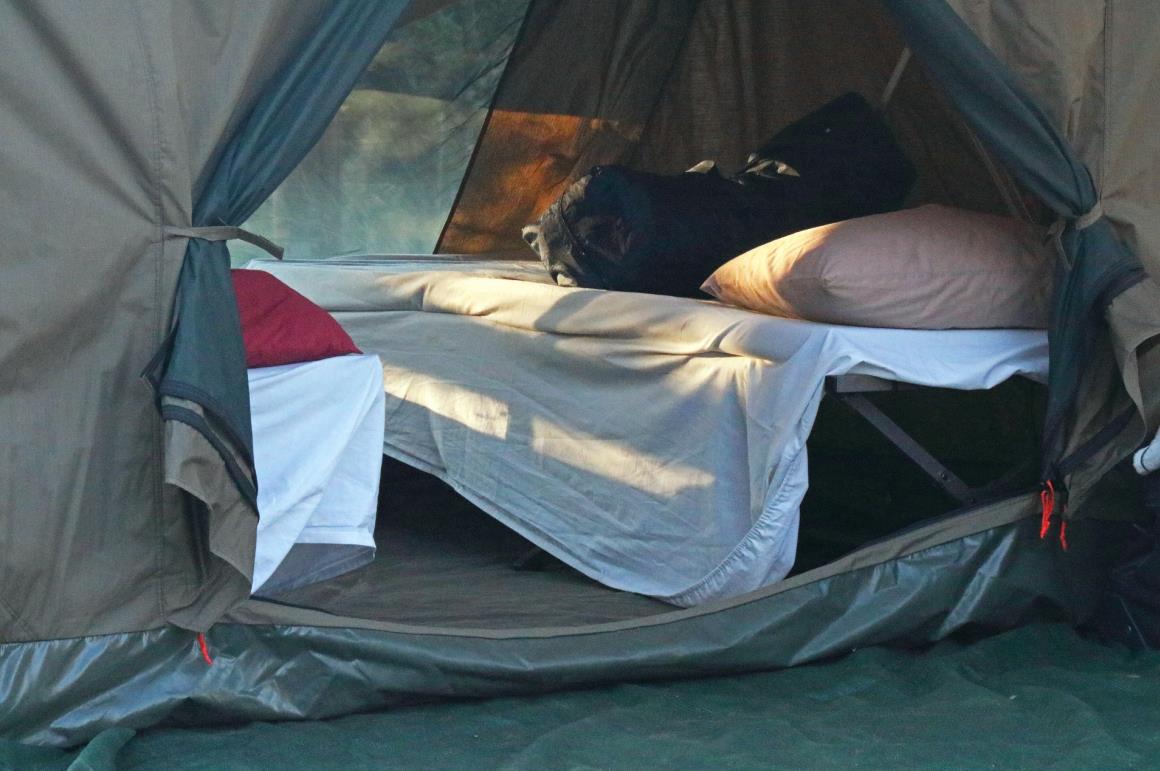
Getting a good night’s sleep is crucial when camping, especially when you’re going solo. Without the comfort of your bed, having the right bedding gear is important to ensure a comfortable night’s rest.
This section discusses the essential bedding equipment you should consider bringing on your solo camping trip, including what each item does and how it contributes to a comfortable camping experience.
Tent
A tent serves as your shelter and provides a protected space to sleep. It shields you from rain, wind, insects, and other outdoor elements.
Look for a tent that best suits your needs in size, weight, and ease of setup. Consider the expected weather conditions and choose a tent with appropriate waterproofing and ventilation features.
Sleeping bag
A sleeping bag provides insulation and warmth while you sleep. It traps your body heat, keeping you comfortable during chilly nights. Sleeping bags come in different sizes, varied shapes, and temperature ratings.
Select one that matches the expected temperature range of your camping destination. Keep in mind that temperature ratings indicate the lowest temperature maintained in the sleeping bag, so choose accordingly.
Sleeping pad or air mattress
A sleeping pad or air mattress provides cushioning and insulation between you and the ground. It helps prevent heat loss to cold ground and adds comfort by providing a softer surface to sleep on.
Sleeping pads come in various types, such as self-inflating foam pads or inflatable air mattresses. Consider weight, packability, and desired comfort level when choosing the right sleeping pad.
Pillow
A camping pillow offers neck support and adds comfort to your sleeping setup. While it may seem like a small luxury, a pillow can significantly improve your sleep quality while camping. You can choose compressible pillows packed easily, inflatable pillows that save space, or even create a makeshift pillow using a stuff sack filled with soft clothing.
Groundsheet or footprint
A groundsheet or footprint is a protective layer placed underneath your tent. It helps to protect the tent floor from punctures, moisture, and abrasions. It also provides an extra barrier against ground moisture and can extend the lifespan of your tent.
Blanket or extra layers
Depending on the weather conditions, bringing a blanket or extra layers of clothing to your sleeping bag for added warmth is a good idea. It’s always better to have more insulation options if the temperatures drop unexpectedly.
Miscellaneous checklist
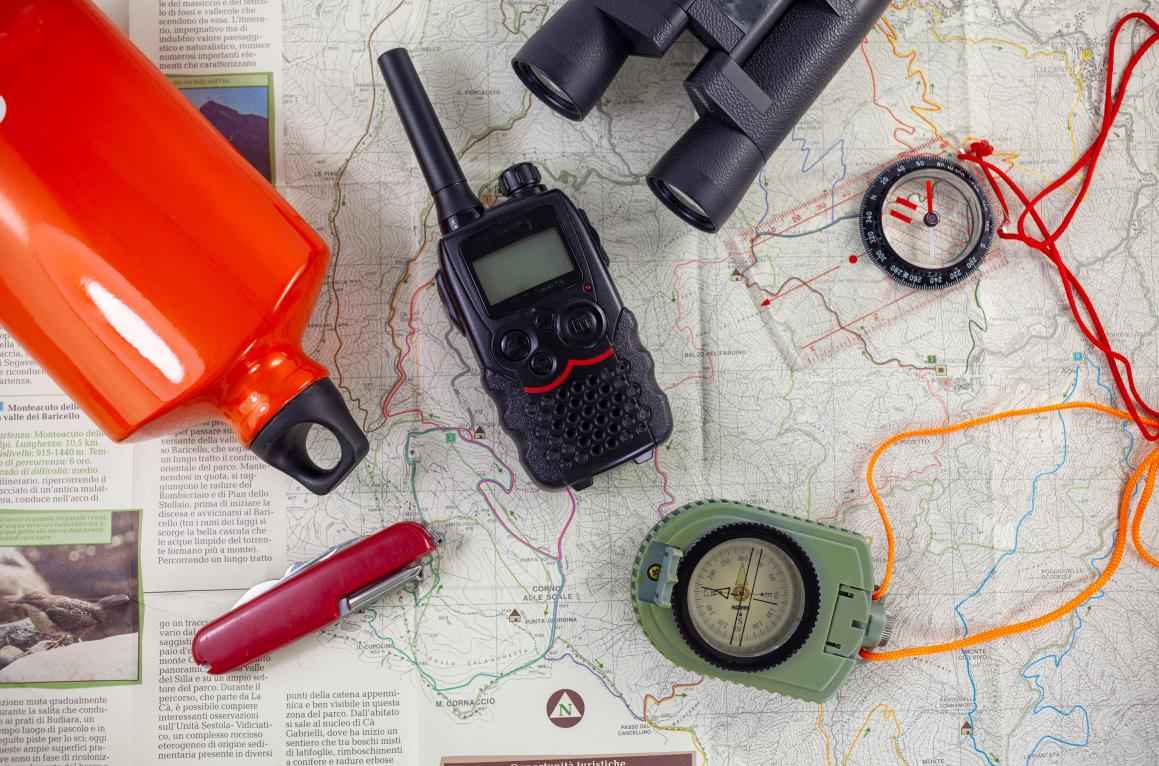
Camping packing involves considering various aspects, including electronics, clothing, and entertainment essentials. In this section, we present a checklist that covers these and other miscellaneous items.
Electronics
- Mobile phone: For communication, emergencies, and navigation (if equipped with GPS).
- Portable charger: To keep your electronics powered when electricity is unavailable.
- Power bank: A backup power source for charging devices.
- Headphones: For listening to podcasts, music, or audiobooks during downtime.
- Camera: If you enjoy photography, bring a camera to capture beautiful moments and scenery.
Clothing
- Weather-appropriate clothing: Pack clothing suitable for the expected weather conditions, including layers for temperature changes.
- Rain gear: A waterproof jacket, pants, or a rain poncho to stay dry during wet weather.
- Sturdy hiking boots or shoes: Comfortable footwear with good traction for hiking and exploring.
- Extra socks: Bring extra socks to keep your feet dry and comfortable.
- Hat and sunglasses: Protect yourself from the sun’s rays and stay comfortable outdoors.
- Swimwear (if applicable): Pack swimwear if your camping spot includes swimming activities.
Entertainment
- Book or e-reader: Bring a book or e-reader for leisurely reading.
- Musical instrument: If you play a portable instrument, such as a guitar or harmonica, consider bringing it along for campfire jam sessions. You can use your car infotainment system if you are car camping.
- Journal and pen: Capture your thoughts, experiences, and memories of your solo camping trip.
- Binoculars: Enhance your wildlife viewing or stargazing experiences.
Remember to tailor this list to your specific needs and preferences, and leave some room for personal items and any additional equipment you may need.
Handpicked for you
True cutting power in the palm of your hand
Tips for solo camping
Below are some camping tips to consider before and during your trip to solitude.
Check the weather forecast
Check the weather forecast of your camping destination before heading out. Doing so will help you pack appropriate clothing, gear, and plan activities accordingly. Be prepared for changing weather conditions by bringing extra layers or rain gear.
In addition to checking the general weather forecast for the region, pay attention to any specific local weather patterns or microclimates that may exist. For example, mountainous areas, coastal regions, and desert environments can have unique weather characteristics that may differ from the broader forecast.
Scout the camping spot
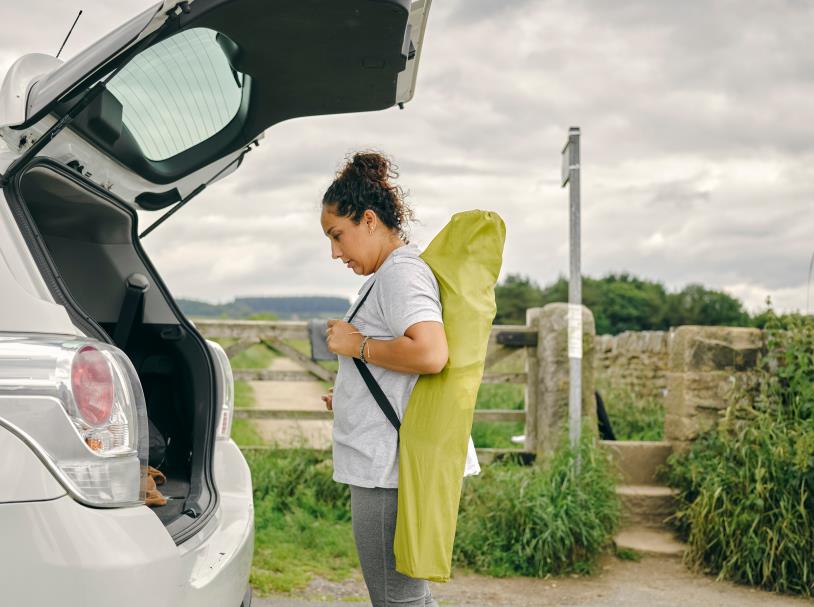
Once you arrive at your campsite, start by scouting the area. Look for a level and well-drained spot to set up your tent. Assess the surroundings for hazards such as overhanging branches, unstable rocks, or ant nests. Consider natural features such as trees, rocks, or bushes that can provide a windbreak for your campsite.
Take into account the natural beauty and views offered by the campsite. If you’re camping for relaxation or photography, choose a spot that offers scenic vistas, stunning sunrises, or breathtaking landscapes.
And if solitude is vital to you, choose a campsite with some seclusion. Look for areas with a reasonable distance between neighboring campsites or opt for more remote locations that provide greater privacy.
Inform someone about your plans
Before you embark on your solo camping adventure, let a family member or one of your friends know about your plans. Share details about your destination, the estimated duration of your solo trip, and when you expect to return. Let someone be aware of your whereabouts in an emergency.
Stay hydrated and nourished
Drink lots of water and eat enough fruits to help keep you hydrated throughout your trip. Also, pack ample food and snacks that are easy to prepare and provide the necessary energy. Consider meal planning in advance to avoid carrying excess food or experiencing food spoilage.
Practice leave-no-trace
Respect the environment and ensure you practice Leave No Trace principles. Minimize your impact by packing out all trash, disposing of waste properly, and avoiding unnecessary damage to flora and fauna. Preserve the natural environment by leaving rocks, plants, and artifacts as you find them.
Be mindful of wildlife
Research the wildlife in the area and take precautions accordingly. Store your food securely in animal-proof containers. Respect the natural habitat of animals and observe them from a safe distance.
Safety first
Prioritize your safety while camping alone. Carry a first aid kit and know basic first aid techniques. Be aware of your surroundings, and keep emergency contacts and a map or compass handy. If the site allows campfires, follow proper fire safety protocols. Clear a safe area around your fire pit, and extinguish the fire before leaving your campsite.
Carry personal and medical information cards
Remember to prepare and carry a personal information card. The card should contain vital information to aid in case of an emergency during your solo camping trip. Include your full name, an emergency contact person with their relationship and contact information, any pertinent medical information or allergies, blood type, insurance information if applicable, and additional emergency contacts.
Closing Thoughts
Preparing for a solo camping trip requires careful consideration and planning. This comprehensive checklist covered essential items across various categories to ensure you’re well-prepared for your adventure. From survival tools, cooking, and bedding equipment to electronics, clothing, and entertainment, each item enhances your comfort, safety, and enjoyment while camping solo.
Among the many essentials you’ll need is a camping cooking knife. At HDMD Knives, we make the best-quality, high-carbon hand-made knives. Check out our store and choose a suitable knife for your solo camping needs.







